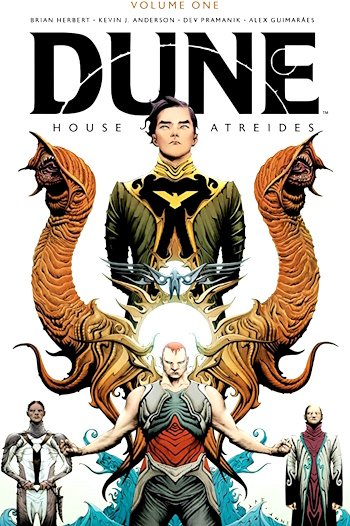Steve Jobs by Walter Isaacson 147
annoying to have to deal with the person he had hired to run it, who kept talking about “venture” philanthropy and how to “leverage” giving. Jobs became contemptuous of people who made a display of philanthropy or thinking they could reinvent it. Earlier he had quietly sent in a $5,000 check to help launch Larry Brilliant’s Seva Foundation to fight diseases of poverty, and he even agreed to join the board. But when Brilliant brought some board members, including Wavy Gravy and Jerry Garcia, to Apple right after its IPO to solicit a donation, Jobs was not forthcoming. He instead worked on finding ways that a donated Apple II and a VisiCalc program could make it easier for the foundation to do a survey it was planning on blindness in Nepal.
His biggest personal gift was to his parents, Paul and Clara Jobs, to whom he gave about $750,000
worth of stock. They sold some to pay off the mortgage on their Los Altos home, and their son came over for the little celebration. “It was the first time in their lives they didn’t have a mortgage,” Jobs recalled. “They had a handful of their friends over for the party, and it was really nice.” Still, they didn’t consider buying a nicer house. “They weren’t interested in that,” Jobs said.
“They had a life they were happy with.” Their only splurge was to take a Princess cruise each year. The one through the Panama Canal “was the big one for my dad,” according to Jobs, because it reminded him of when his Coast Guard ship went through on its way to San Francisco to be decommissioned.
With Apple’s success came fame for its poster boy.
Inc. became the first magazine to put him on its cover, in October 1981. “This man has changed business forever,” it proclaimed. It showed Jobs with a neatly trimmed beard and well-styled long hair, wearing blue jeans and a dress shirt with a blazer that was a little too satiny. He was leaning on an Apple II and looking
Steve Jobs by Walter Isaacson 148
directly into the camera with the mesmerizing stare he had picked up from Robert Friedland. “When Steve Jobs speaks, it is with the gee-whiz enthusiasm of someone who sees the future and is making sure it works,” the magazine reported.
Time followed in February 1982 with a package on young entrepreneurs. The cover was a painting of Jobs, again with his hypnotic stare. Jobs, said the main story,
“practically singlehanded created the personal computer industry.” The accompanying profile, written by Michael Moritz, noted, “At 26, Jobs heads a company that six years ago was located in a bedroom and garage of his parents’ house, but this year it is expected to have sales of $600 million. . . . As an executive, Jobs has sometimes been petulant and harsh on subordinates. Admits he: ‘I’ve got to learn to keep my feelings private.’”
Despite his new fame and fortune, he still fancied himself a child of the counterculture. On a visit to a Stanford class, he took off his Wilkes Bashford blazer and his shoes, perched on top of a table, and crossed his legs into a lotus position. The students asked questions, such as when Apple’s stock price would rise, which Jobs brushed off. Instead he spoke of his passion for future products, such as someday making a computer as small as a book. When the business questions tapered off, Jobs turned the tables on the well-groomed students. “How many of you are virgins?”
he asked. There were nervous giggles. “How many of you have taken LSD?” More nervous laughter, and only one or two hands went up. Later Jobs would complain about the new generation of kids, who seemed to him more materialistic and careerist than his own. “When I went to school, it was right after the sixties and before this general wave of practical purposefulness had set in,” he said. “Now students aren’t even thinking in
Steve Jobs by Walter Isaacson 149
idealistic terms, or at least nowhere near as much.” His generation, he said, was different. “The idealistic wind of the sixties is still at our backs, though, and most of the people I know who are my age have that ingrained in them forever.”
Steve Jobs by Walter Isaacson 150
CHAPTER TEN
Steve Jobs by Walter Isaacson 151
THE MAC IS BORN
You Say You Want a Revolution
Jef Raskin’s Baby
Jef Raskin was the type of character who could enthrall Steve Jobs—or annoy him. As it turned out, he did both. A philosophical guy who could be both playful and ponderous, Raskin had studied computer science, taught music and visual arts, conducted a chamber opera company, and organized guerrilla theater. His 1967 doctoral thesis at U.C. San Diego argued that computers should have graphical rather than text-based interfaces. When he got fed up with teaching, he rented a hot air balloon, flew over the chancellor’s house, and shouted down his decision to quit.
When Jobs was looking for someone to write a manual for the Apple II in 1976, he called Raskin, who had his own little consulting firm. Raskin went to the garage, saw Wozniak beavering away at a workbench, and was convinced by Jobs to write the manual for $50.
Eventually he became the manager of Apple’s publications department. One of Raskin’s dreams was to build an inexpensive computer for the masses, and in 1979 he convinced Mike Markkula to put him in charge of a small development project code-named “Annie” to do just that. Since Raskin thought it was sexist to name computers after women, he redubbed the project in honor of his favorite type of apple, the McIntosh. But he changed the spelling in order not to conflict with the name of the audio equipment maker McIntosh Laboratory. The proposed computer became known as the Macintosh.
Raskin envisioned a machine that would sell for
Steve Jobs by Walter Isaacson 152
$1,000 and be a simple appliance, with screen and keyboard and computer all in one unit. To keep the cost down, he proposed a tiny five-inch screen and a very cheap (and underpowered) microprocessor, the Motorola 6809. Raskin fancied himself a philosopher, and he wrote his thoughts in an ever-expanding notebook that he called “The Book of Macintosh.” He also issued occasional manifestos. One of these was called “Computers by the Millions,” and it began with an aspiration: “If personal computers are to be truly personal, it will have to be as likely as not that a family, picked at random, will own one.”
Throughout 1979 and early 1980 the Macintosh project led a tenuous existence. Every few months it would almost get killed off, but each time Raskin managed to cajole Markkula into granting clemency. It had a research team of only four engineers located in the original Apple office space next to the Good Earth restaurant, a few blocks from the company’s new main building. The work space was filled with enough toys and radio-controlled model airplanes (Raskin’s passion) to make it look like a day care center for geeks. Every now and then work would cease for a loosely organized game of Nerf ball tag. Andy Hertzfeld recalled, “This inspired everyone to surround their work area with barricades made out of cardboard, to provide cover during the game, making part of the office look like a cardboard maze.”
The star of the team was a blond, cherubic, and psychologically intense self-taught young engineer named Burrell Smith, who worshipped the code work of Wozniak and tried to pull off similar dazzling feats.
Atkinson discovered Smith working in Apple’s service department and, amazed at his ability to improvise fixes, recommended him to Raskin. Smith would later succumb to schizophrenia, but in the early 1980s he
Steve Jobs by Walter Isaacson 153
was able to channel his manic intensity into weeklong binges of engineering brilliance.
Jobs was enthralled by Raskin’s vision, but not by his willingness to make compromises to keep down the cost. At one point in the fall of 1979 Jobs told him instead to focus on building what he repeatedly called an “insanely great” product. “Don’t worry about price, just specify the computer’s abilities,” Jobs told him.
Raskin responded with a sarcastic memo. It spelled out everything you would want in the proposed computer: a high-resolution color display, a printer that worked without a ribbon and could produce graphics in color at a page per second, unlimited access to the ARPA net, and the capability to recognize speech and synthesize music, “even simulate Caruso singing with the Mormon tabernacle choir, with variable reverberation.” The memo concluded, “Starting with the abilities desired is nonsense. We must start both with a price goal, and a set of abilities, and keep an eye on today’s and the immediate future’s technology.” In other words, Raskin had little patience for Jobs’s belief that you could distort reality if you had enough passion for your product.
Thus they were destined to clash, especially after Jobs was ejected from the Lisa project in September 1980 and began casting around for someplace else to make his mark. It was inevitable that his gaze would fall on the Macintosh project. Raskin’s manifestos about an inexpensive machine for the masses, with a simple graphic interface and clean design, stirred his soul. And it was also inevitable that once Jobs set his sights on the Macintosh project, Raskin’s days were numbered.
“Steve started acting on what he thought we should do, Jef started brooding, and it instantly was clear what the outcome would be,” recalled Joanna Hoffman, a member of the Mac team.
The first conflict was over Raskin’s devotion to the
Steve Jobs by Walter Isaacson 154
underpowered Motorola 6809 microprocessor. Once again it was a clash between Raskin’s desire to keep the Mac’s price under $1,000 and Jobs’s determination to build an insanely great machine. So Jobs began pushing for the Mac to switch to the more powerful Motorola 68000, which is what the Lisa was using. Just before Christmas 1980, he challenged Burrell Smith, without telling Raskin, to make a redesigned prototype that used the more powerful chip. As his hero Wozniak would have done, Smith threw himself into the task around the clock, working nonstop for three weeks and employing all sorts of breathtaking programming leaps.
When he succeeded, Jobs was able to force the switch to the Motorola 68000, and Raskin had to brood and recalculate the cost of the Mac.

























